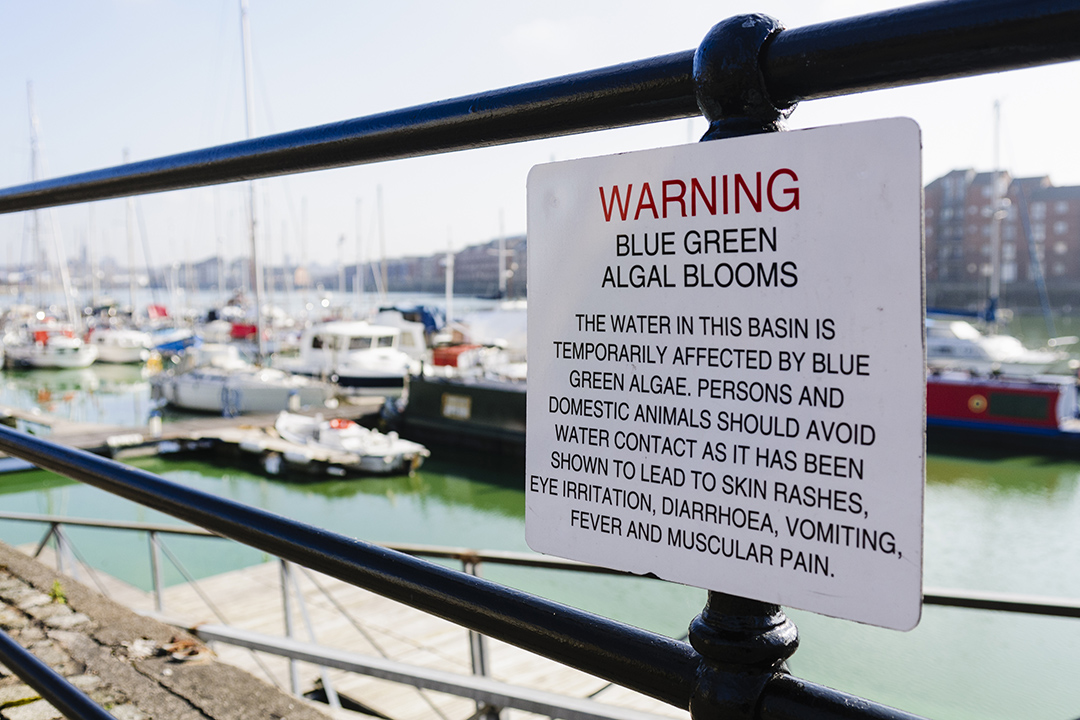
Harmful algal blooms: alarming threats lurking in waters
Have you ever walked by a pond and noticed a thick green or bluish-green layer covering the surface of water? These thick layers are becoming increasingly common in oceans, lakes, ponds and other water bodies — threatening aquatic life and human health.
By Jinnath Rehana RituHarmful algal bloom (HAB) is a term that describes the rapid growth of harmful microscopic algae on the surface of water bodies, often posing risks or killing fish, shellfish and other aquatic organisms. Climate change, pollution and excessive nutrients — such as nitrogen and phosphorus used in the agriculture industry and in urban areas — are responsible for the growing occurrence of HABs.
The real danger lies beneath the water's surface in the toxins that the blooms release. HABs can harm aquatic animals by releasing toxins or using up oxygen, making it unfavourable for fish and other aquatic animals to live. In a devastating example a few years ago, HABs killed around eight million salmon in ocean net pens in Norway.
Among different microalgal toxins, neurotoxins are particularly alarming due to their lethal effects that scientists have observed globally. Neurotoxins, which alter the normal activity of the nervous system, enter the food chain and indirectly affect animals. For example, sea lions get toxins from eating anchovies (fish) that have consumed toxic microalgae. Neurotoxins from HABs recently killed hundreds of sea lions, dolphins, seabirds and marine mammals along California's southern beaches and Alaska's coast.
Another great threat to underwater life is that some neurotoxins are being transferred from mother animals to their offspring, which means the effects of neurotoxins can last from generation to generation.
Aquatic animals need learning and memory to survive. They use them to adapt to their surroundings, find food and avoid predators. Memory also helps animals migrate so they can find their way back to their breeding or feeding spots. Neurotoxins from harmful microalgae can disrupt these vital functions by interfering with the nervous system of fish and other aquatic creatures. When they’re exposed to neurotoxins, it can lead to disruptions in their neural pathways and communication between brain cells. This interference can weaken their ability to learn new tasks or remember information in their changing environments.
The impact of HABs isn't limited to aquatic life only. Neurotoxins can enter a human’s body through inhalation, skin contact or the consumption of contaminated seafood (fish, mussels or clams). Research has shown that these neurotoxins affect the nervous system and can cause illnesses such as Alzheimer’s disease or Parkinson's disease, which is why it’s critical to monitor and control seafood from areas with harmful algal blooms and prevent these toxins from affecting humans.

HABs can also threaten the lives of companion animals as well as cattle, horses and other livestock that come in contact with toxic algae blooms. Livestock can be poisoned when the wind pushes dying blooms near their regular watering areas. Weakness, uncontrolled movement and laboured breathing are some of the most common symptoms observed in animals that have ingested toxins. Each year, there are numerous reports of animals falling ill or rapidly dying after drinking contaminated water or swimming in water affected by HABs.
Scientists are conducting research to explore the mechanisms of how neurotoxins from harmful microalgae kill aquatic animals and affect their cognitive behaviours. There are also studies investigating the links between HABs and human diseases. Understanding these effects could provide insights into how these toxins affect behaviour and shed light on the broader impacts of harmful algal blooms on aquatic life and human health. This work may also help in building public awareness and developing strategies to save biodiversity.
Addressing the problems created by HABs demands a comprehensive approach. Reducing nutrient pollution in water bodies is a crucial step that can be reached through better agricultural practices, improved wastewater treatment and responsible urban runoff management. Early detection and monitoring of blooms can also help to ensure timely warnings and responses.
How can you help? Here are ways that everyone can contribute to reducing HABs and their effects:
- limit the use of fertilizers and chemicals in your yards and acreages to prevent runoff into waterways
- dispose of trash and pet waste to keep water clean
- support local efforts to protect and clean up lakes, rivers and oceans
- follow warnings and advisories about swimming or using water from areas affected by HABs to keep your family and animals safe
Jinnath Rehana Ritu is a PhD student in the University of Saskatchewan’s College of Arts and Science. Jinnath is also a member of the Aauatic Predation and Environmental Change Lab where she is working on the blue-green microalgal neurotoxins and their effects on the cognitive behaviour of zebrafish.
